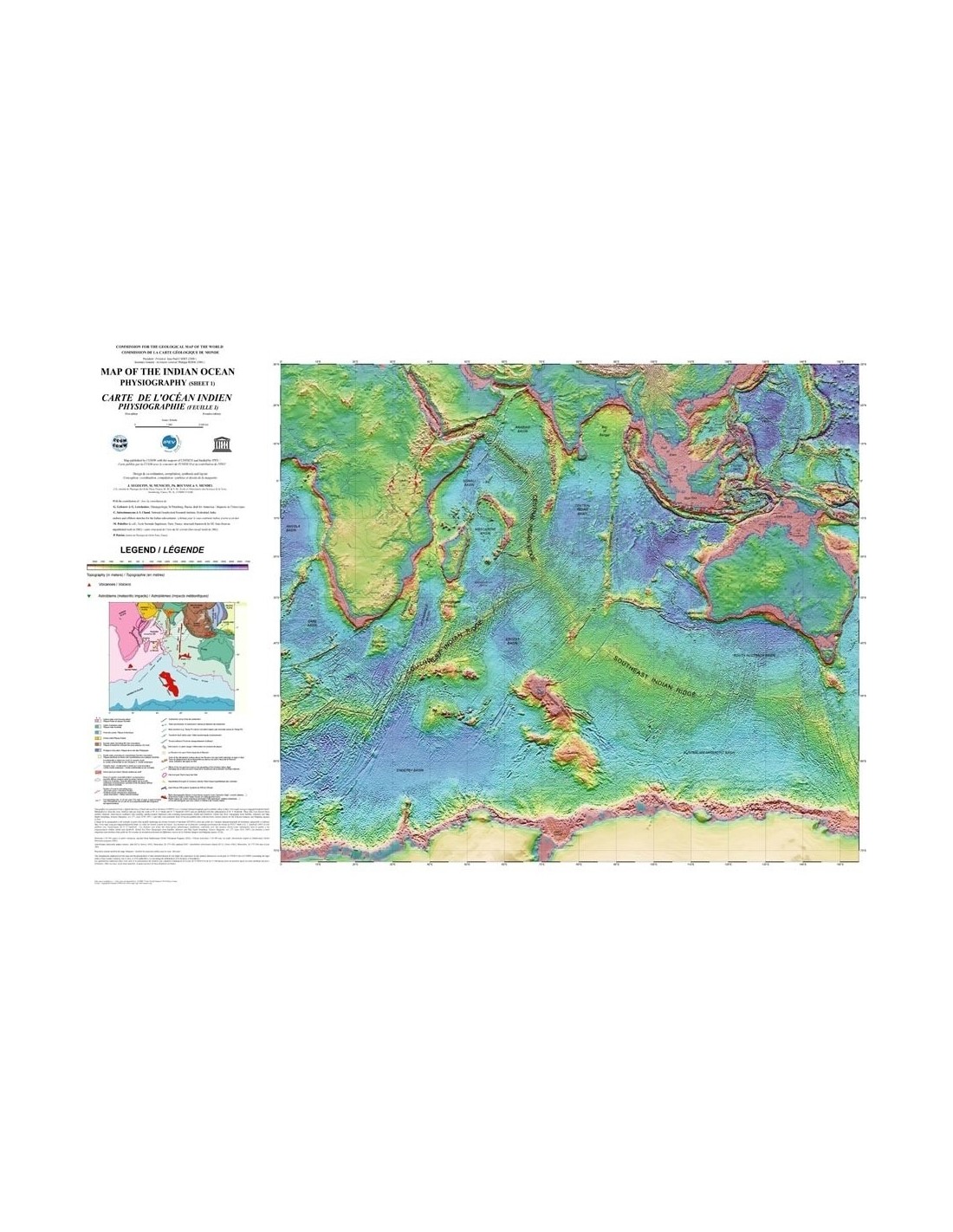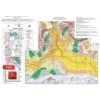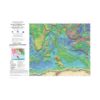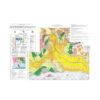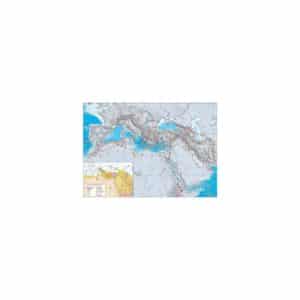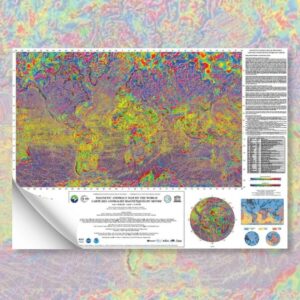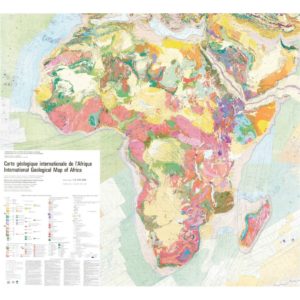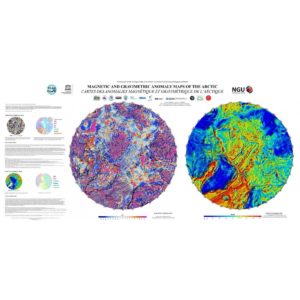Map of the Indian Ocean - PDF
53,00 €
Map of the Indian Ocean - PDF
Sheet 1: Physiography Sheet 2: Structure
Published in August 2004 at a scale of 1:20 M
Reprint at 1/40 M scale: 2013
Size: 59.4 cm x 42 78 cm
CCMG
Financial support: UNESCO and IPEV (Institut Paul Emile Victor)
Authors: J. Ségoufin, M. Munschy, Ph. Bouysse and V. Mendel, et al.
Availability: In stock
Description
Map of the Indian Ocean - PDF
Scanned version in high resolution .pdf format, sent by download link.
Note: This map is subject to a licence agreement.
This map is also available in digital .pdf format in our catalogue.
The two sheets (1- Physiography; 2- Structural Map) of this Map, were the first in a new series of maps of the CGMW dedicated to the world's oceans. The Indian Ocean map shows the main morphological and structural features of the region, and covers both the land and the seabed. It incorporates the most recent data from marine magnetic anomaly and satellite altimetry campaigns stored in international geophysical databases.
The Physiography map provides a digitised 'fine-grained' image of the morphology of the land and sea surfaces, supplemented by the drawing of selected isobath curves (-200 m, -1000 m, then every 1000 m). In addition to its scientific interest, the aesthetics of this sheet is undeniable. Some 300 active or Holocene volcanoes and about 40 meteorite impact craters are plotted.
Map of the Indian Ocean - PDF
On the Structural Map, the most striking geological features are shown on land: Archean, Proterozoic, Phanerozoic basins; Paleozoic, Mesozoic, and Cenozoic orogenies; major accidents, large strike-slip faults, thrust fronts. Because of its specific environment (giant ice cap), Antarctica has received an appropriate cartographic treatment.
For submarine areas, the emphasis is on the structuring of the oceanic crust: chronostratigraphic ages, oceanic accretionary axes, transform faults, subduction zones, anomalous crustal reliefs (seismic ripples, oceanic plateaus, etc.). Also shown are the location of standard magnetic anomaly picks (chron), the divergence (accretionary ridges) and convergence (subduction zones) vectors, the thickness of the sediments covering the oceanic basement, and the compression zone affecting the oceanic crust between the Indian continental block and its Australian counterpart
Map of the Indian Ocean-PDF.
Earthquakes of magnitude = 5.0 have been plotted, both onshore and offshore, with a figure depending on their strength and depth at focus.
In the box, a geodynamic sketch summarises the main characteristics of plate tectonics in the mapped area; it highlights in particular the imprint of the Reunion hot spot on the lithosphere, which has been in motion since around 65 Ma, the time of the gigantic outpouring of basalts from the Deccan traps.
After the original edition ran out, a reduced version of the two maps at a scale of 1:40,000,000 was released in October 2013.
Explanatory notes to download here
Map of the Indian Ocean - PDF


